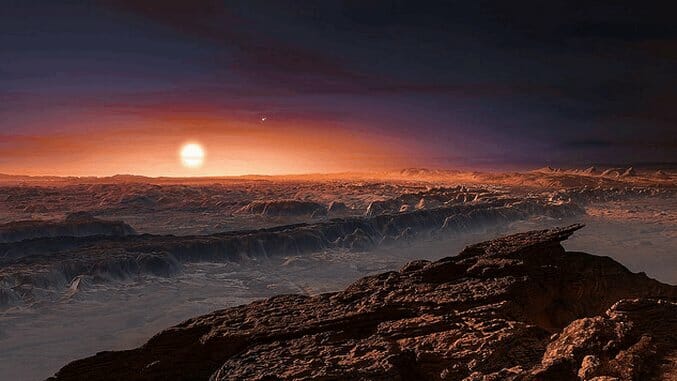Proxima b Could Be Habitable After All

New models suggest that the rocky planet dubbed “Proxima b” could potentially support human life.
The planet, first discovered by the European Southern Observatory (ESO), was found orbiting the closest star to Earth—apart from the Sun—Proxima Centauri. Tiny Doppler shifts indicated the presence of Proxima b as having at least 1.3 times the mass of Earth, orbiting only 5 percent of the Earth-Sun distance away from Proxima Centauri. Despite the fact that the exoplanet is orbiting so close to its star, it still remains within the habitable zone around the star.
What this means: Proxima b’s temperature could be conducive to hosting liquid water.
Regardless of this finding, though, scientists are still hesitant to declare the planet completely habitable due to the fact that Proxima b’s climate conditions and atmospheric makeup are still wholly unknown. According to the ESO, though, it is “unlikely that Proxima b has seasons.”
-

-

-

-

-

-

-

-

-

-

-

-

-

-

-

-

-

-

-

-

-

-

-

-

-

-

-

-

-

-

-

-

-

-

-

-

-

-

-

-








































